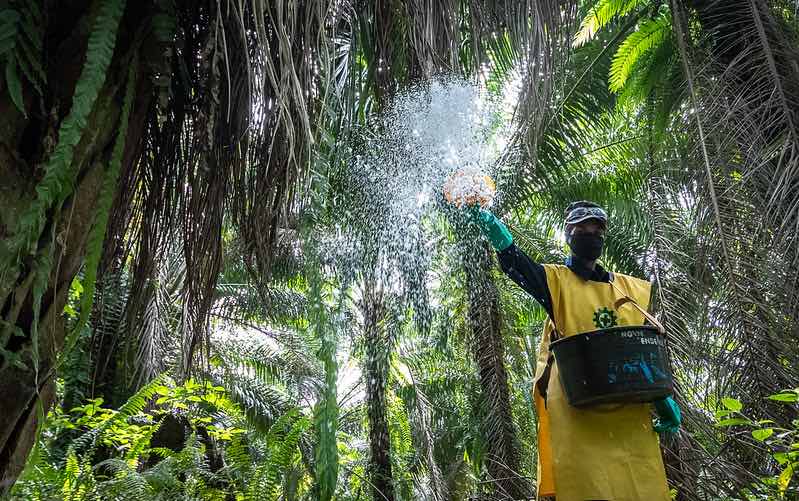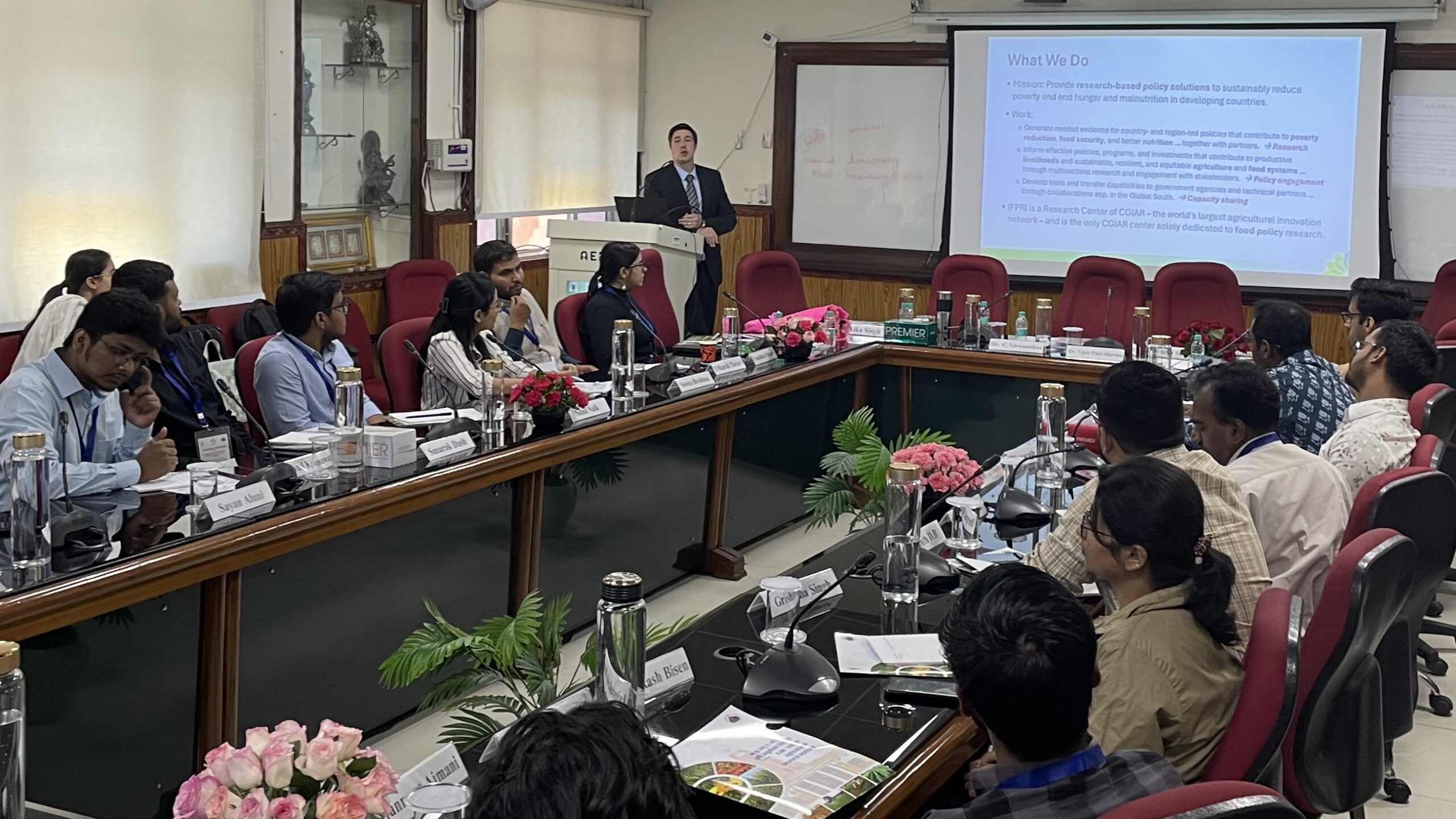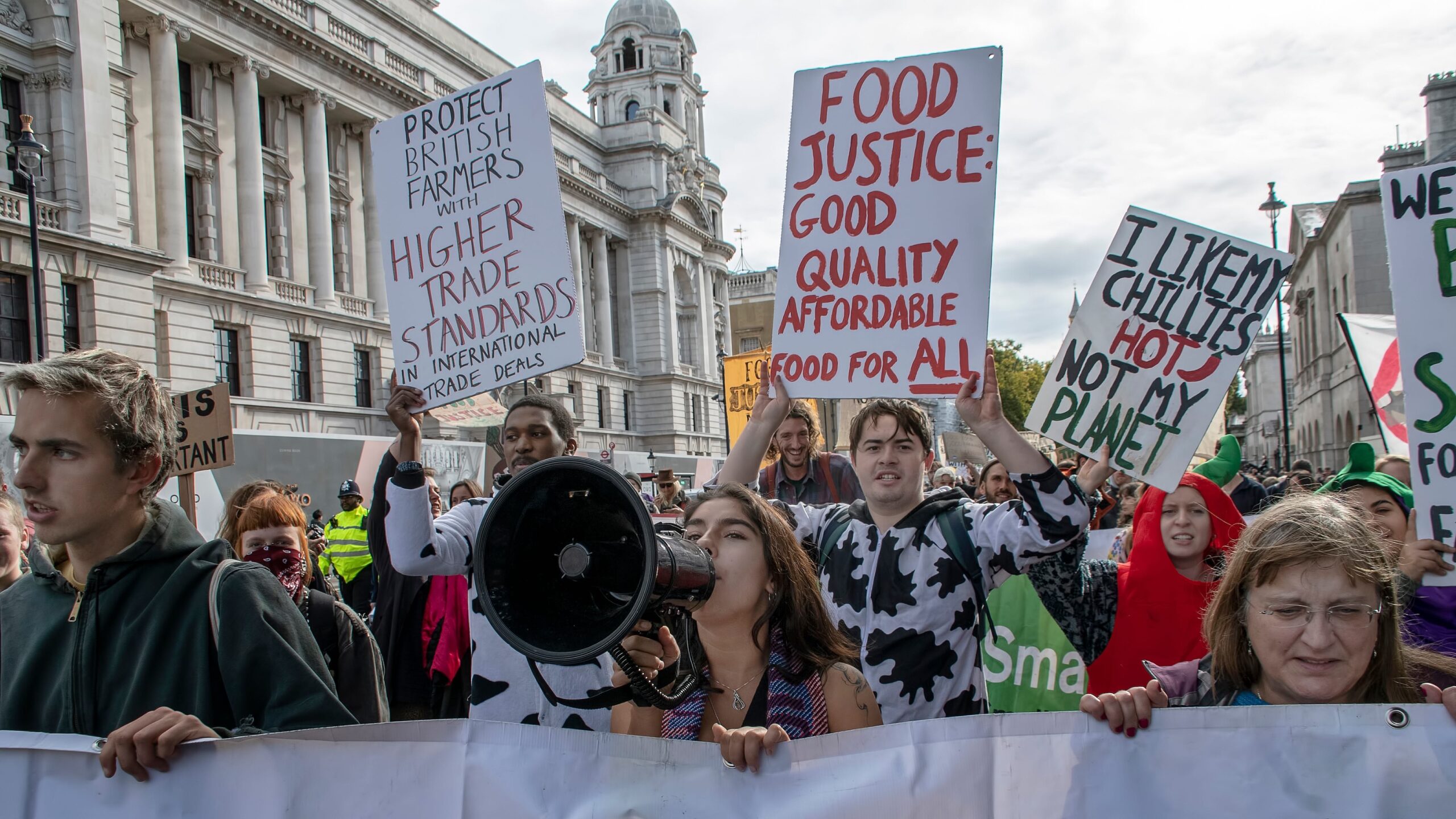Russia’s 2022 invasion of Ukraine triggered global disruptions in markets for key food crops and fertilizers, threatening food security worldwide. With the war now entering its second year, high international food prices have moderated, though domestic price levels remain high in many low- and mid-income countries. Here, we turn to global fertilizer markets, examining how they weathered the past year and the likely impacts going forward for agricultural production and food security.
The good news is that fertilizer prices, while still high, have fallen significantly from their 2022 peaks (Figure 1). As with the global trade in food crops, that rise and fall is a complex story of shifting supplies and trade linkages.
Figure 1
At the time of the Russian invasion, fertilizer prices were already at historically high levels. They had been rising since late 2020 due to several factors. Fertilizer demand, which declined during COVID 19 lockdowns, rebounded in late 2020/2021 as restrictions were lifted and crop prices rose. On the supply side, increases in prices of natural gas and coal—key feedstocks and energy sources in fertilizer production—as well as some reductions in production capacity also added upward pressure on prices.
Then the outbreak of war on February 24, 2022, drove prices dramatically higher. Uncertainties multiplied about fertilizer exports from Russia and Belarus due to the conflict itself, new or expanded economic sanctions on the two countries, and disruptions in Black Sea trade routes. Russia and Belarus are important producers of all three major fertilizer nutrients: In 2020, Russia accounted for 14% of global trade in urea and 11% of trade in phosphate, while jointly Russia and Belarus accounted for 41% of global trade in potash. The fact that a small number of countries produce a large share of internationally traded fertilizers makes the sector vulnerable to trade shocks.
Countries heavily dependent on fertilizer imports from Russia and Belarus feared an immediate shortfall, and many had to scramble to secure alternative sources from a very tight global market. But with some three quarters of all countries importing at least 50% of their fertilizer consumption (Figure 2), trade shocks created by the war reverberated around the world.
Figure 2
Post-invasion turmoil in natural gas markets and skyrocketing gas prices also contributed to rising fertilizer prices.
Sanctions, export restrictions and changes in trade flows
The sanctions imposed by the European Union, United States, Canada, and other countries on Russia and Belarus after the invasion—on top of earlier restrictions—formally exempt agricultural products (EU sanctions do ban potash imports from Belarus and forbid shipments of Belarussian potash through EU territory to other markets). Despite the carve-outs for agricultural products, sanctions may have led to decreased fertilizer trade to some regions, since importers may choose not to purchase from these two countries because of added costs of doing business with them, such as more restrictive banking regulations, higher insurance costs, or out of fear of being ensnared in financial sanctions.
An IFPRI analysis estimated potash exports from Belarus were at least 50% lower in 2022 than in 2021 because of the sanctions and restrictions on using EU territory for transit. While total Russian urea and potash exports were down between January-August 2022 compared to the same period in 2021, they recovered in the remaining part of the year. The shutdown of the Tolyatti ammonia pipeline to Odesa contributed to a dramatic decline of Russian ammonia exports—63% for the period January-August over 2021 (some of the decline might also be linked to “overcompliance” with sanctions).
Also disrupting global markets were various types of export restrictions imposed by some countries keen to keep domestically produced fertilizer available for domestic consumption. These included outright bans or onerous inspection and licensing processes. IFPRI estimated in June 2022 that some 20% of global fertilizer trade was impacted by such restrictions.
In particular, fertilizer exports from China plunged after the country restricted exports from mid-2021 onwards. Chinese exports of diammonium phosphate (DAP), which typically account for 30% of global DAP trade, fell by 43% in 2022 compared with 2021, while Chinese urea exports declined by 47% in the same time frame (Figure 3).
Figure 3
Large fertilizer importers facing a shortfall from Russia and Belarus were able to secure supplies from alternative sources. Brazil, for example, the second largest importer of potash, managed to increase imports from Canada to help offset the decline from Belarus; Morocco, the fourth largest global ammonia importer, stepped up imports from Saudi Arabia and Egypt to make up for shortfalls from Russia. Meanwhile, production capacities of some regions increased along with exports—in particular potash from Canada and phosphate from Morocco, as well as urea from Nigeria. At the same time, Russian fertilizer exports also increased dramatically in some markets, such as India.
However, some smaller low-income countries in sub-Saharan Africa (SSA) found it much more difficult to secure fertilizers, as they encountered problems with fertilizer availability after the invasion.
While the International Fertilizer Association (IFA) forecasts a global decline of fertilizer consumption of 5% for fertilizer year 2022, the International Fertilizer Development Center estimates that fertilizer consumption in SSA, outside of South Africa, may have declined by as much as 25%, putting the continent back to consumption levels seen in the mid-2010s.
Over the course of 2022 and into 2023, international prices eased and fertilizers became more available in global markets, but remained unaffordable in many African countries due to persistently high domestic price inflation. Even without the price pressure, fertilizer prices in Africa are generally higher than in the rest of the world, given the still significant transportation infrastructure and regulatory bottlenecks.
Fiscal constraints and a lack of foreign exchange created difficulties for financing more expensive fertilizer imports. Subsidy bills ballooned in some countries, and in some cases became unsustainable. However, assistance from global organizations has made a difference. International development banks including the World Bank and the African Development Bank offered financing facilities; and other initiatives, such as Sustain Africa, also supported by donations from the fertilizer industry, sprang up to help channel fertilizers to African countries in need. The World Food Programme, which traditionally provides food aid, also offered its services on a full cost recovery to ship fertilizers donated by a Russian fertilizer company.
Possible impacts on agricultural production and food security
Assessing the impact of the fertilizer crisis—in particular, reduced demand—on crop yields is a complex undertaking, especially in regions of the world with large numbers of smallholder farmers. Yield impacts vary depending not only on amounts being used but on shifting fertilizer choices. In times of high prices, farmers tend to favor nitrogen, and thus there has been a steeper global decline in demand for potash and phosphate. Yield impacts from decreased nitrogen use can be witnessed within the same growing season, while the impacts of skimping on potash and phosphate on yields, but also on soil health, may take several years to materialize.
Nor is it easy to gauge impacts of reduced fertilizer consumption on food security. Many factors affect production: climate- and weather-driven events such as droughts and floods, or high post-harvest food losses can drive down productivity even if sufficient fertilizers have been applied. Fertilizers are also used to produce non-food crops, particularly for biofuels. Global biofuel production is still increasing, albeit at lower rates since 2020, and by and large is still relying on food crop feedstocks rather than advanced non-food crop feedstocks (Figure 4). For example, almost 38% of the U.S. corn crop is used as feedstock for biofuel production, and globally, vegetable oils are forecast to account for some 23% of biofuel feedstocks by 2027.
Figure 4
The allocation of fertilizers in Africa, tracked for some key countries by AfricaFertilizerWatch, also merits close observation. High fertilizer prices and limited supplies may push farmers to further prioritize cash crops over food crops. Cash crops such as coffee, tea, sugar, and tobacco receive a significant share of overall domestic use of fertilizers, going as high as 80% in Cote d’Ivoire and Uganda, and 90% in Mozambique. Cash crop farming can boost economic livelihoods, but does not boost food crop production. Thus it will be important to assess how farmers distributed their fertilizers in 2022.
Lower international prices, but what comes next?
The high prices of 2022 led to reduced demand (or demand destruction) at the farm level, which in turn has brought prices down from their peaks of last year. But following two consecutive years of an overall 7% decline, IFA forecasts a 3% global increase in fertilizer demand in fertilizer year 2023.
Prices remain high by historical standards, however, and domestic price inflation also persists in many countries. The fertilizer sector thus remains vulnerable to further shocks arising out of the Russia-Ukraine war or other developments in an uncertain global market environment.
Capacity increases can ease supply concerns, but greenfield projects require large capital investments and long timespans to come to fruition. In 2023, new ammonia capacity is expected to come online in 2023 in the U.S. Easing China’s export restrictions would also have a significant impact on global markets. Reopening the Togliatti pipeline would bring more Russian ammonia to global markets, but such a move depends on Ukrainian approval. Ongoing negotiations on the renewal of the Black Sea Grain Initiative (which expires on March 18) under UN auspices, also include discussions on the pipeline. Exports of Belarussian potash could conceivably also increase in 2023 if some EU sanction carve-outs were put into place or efforts made to end over-compliance.
While the outlook for fertilizer year 2023 is brighter than that of 2022, the fertilizer sector by its nature remains vulnerable to trade and energy shocks, and the war and other global problems continue to pose serious risks.
Meanwhile, the sector also faces significant longer-term issues that can get lost amid the contingencies of crisis response. These include the huge reliance on fossil fuels for ammonia production and the search for viable alternatives (such as green ammonia produced from electrolysis powered by renewable energy). Fertilizer continues to be used inefficiently in many regions of the world, with negative impacts on soils, water, and climate change. This problem can be addressed through improved fertilizer application, specialty and biological fertilizers, and other solutions. Organic fertilizers require more innovation and promotion for widespread use, as does integrated nutrient management that combines organic and mineral fertilizers. Plant nutrition should also be better integrated with soil health, and it is encouraging that the African Union has opted to hold a Fertilizer and Soil Health Summit in Senegal in June 2023. Overall, countries and international organizations are well advised to find a balance between crisis-oriented fixes and longer-term industry transformation.
Charlotte Hebebrand is IFPRI's Director of Communications and Public Affairs; Joseph Glauber is a Senior Research Fellow with IFPRI's Markets, Trade, and Institutions Division. Opinions are the authors'.







